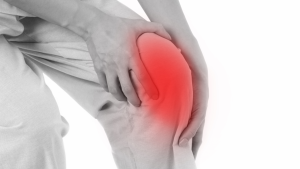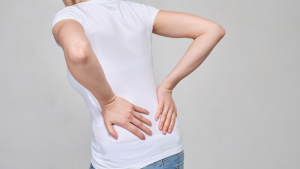Arthritis is a leading cause of pain and disability worldwide. In the United States alone, arthritis affects 50 million adults and over 300,000 children. Arthritis is not a single diagnosis, but in fact a collection of conditions that causes pain and aches related to joint paint.
Arthritis comes in a variety of forms and affects people differently – but the most common types are osteoarthritis and rheumatoid arthritis. And while over-the-counter medications and prescriptions can be effective, many patients do not want to take the risk of taking medication. There are many alternative methods for arthritis treatments that do not include taking pills or utilizing a prescription.

Finding Relief from Arthritis Pain
Treatments for Arthritis Pain Relief
-
The Right Pair of Shoes
According to a study, researchers found that in people with osteoarthritis, flexible shoes like flip-flops and sneakers reduce the force exerted on knee joints by an average of 13% compared to clogs and specialty shoes.
More force on joints equates more pain, so if by wearing flexible shoes there is less force, it should mean there is less pain. This is best to relieve pain in those who suffer from osteoarthritis of the knee and hip.
2. Aquatic Exercises
Water provides a resistance that increases the intensity of an exercise while also providing buoyancy that supports your bodyweight and relieving pressure on your joints.
Water aerobics and exercises have been proven to help improve range of motion, coordination, quality of life, and reduce body fat. While it may not be a long-term solution, patients who participate in aquatic exercises find relief from arthritis pain.
3. Yoga
Yoga, specifically Iyengar yoga that focuses on proper body alignment to support the body and relieve tension, is an excellent way to help relieve arthritis pain. Yoga is helpful in patients with rheumatoid arthritis in relieving pain, improving mood, and the ability to cope with their chronic arthritis pain.
- Supplements
Natural supplements are regularly being researched and approved for help in relieving pain associated with arthritis. Many supplements have properties that act as natural anti-inflammatories and the ability to stimulate neurotransmitters, like serotonin, which reduce pain receptors. Some supplements include:
- Indian Frankincense
- Tumeric
- Fish Oil / Omega 3
- Ginger
5. Massage
Regular massages help relieve tension and relax muscles and joints. Professional massages lower the body’s production of cortisol (the body’s stress hormone) and the neurotransmitter substance P, which is associated with pain. Massages help improve patients’ moods by boosting serotonin levels.
6. Therapy
Different kinds of therapy – exercise, physical, and cognitive behavioral therapies – are all beneficial to patients who suffer from arthritis pain. It improves your body’s strength, posture, range of motion, and functionality. Exercise is known to improve your mood, and when used in conjunction with cognitive behavioral therapy (CBT) it can be incredibly helpful in reducing pain.
CBT, or talk therapy, helps you identify pain points and makes you more aware of the anxieties and stress that is often associated with types of chronic pain like arthritis.
7. Sleep
Giving your body time to rest and relax at night is one of the most effective ways for it to heal and be free from pain. However, if you suffer from chronic pain, then you know that sleep is often disturbed and unachievable. Sleep deprivation can make pain worse and negatively affect your overall health.
Developing a strict schedule, setting alarms when it’s time to wake up and go to bed, help your body’s internal clock and help “reset” your natural sleep cycle. Napping disrupts the cycle, as well as trying to “catch up” on sleep on the weekends.
Being more active during the day can not only help reduce pain, but it will tire you out and make falling asleep easier. Studies have shown that patients who get seven or more hours of sleep a night are happier and healthier.
Arthritis can affect people in many different ways. If you experience any problems or have concerns about using at-home arthritis treatments, talk to your doctor. If you are currently taking medication for your arthritis pain, speak to your doctor before taking any supplements or undergoing any type of therapy for safety purposes.
If you suffer from sciatica, you know how painful it can be. It disrupts your daily life, affecting everything from sitting in the car to standing in the kitchen to make a meal.
Sciatica is a term used for any pain or symptom that causes numbness or sensation like tingling along the sciatic nerve. This means sciatic nerve pain isn’t a true diagnosis but a description of the pain you are experiencing that can help doctors properly assess your pain to determine a source.

Types of Sciatic Nerve Pain
The sciatic nerve runs from your lower back through your hips and down each leg. Generally, when a patient experiences sciatica, it only affects one side of the body.
Common Causes of Sciatic Nerve Pain
Most commonly, sciatica is caused by a herniated disc. Although other lower back conditions can attribute to sciatic nerve pain: arthritis, spinal stenosis, and spondylolisthesis. Sciatica can also be painful if there is a pinched nerve from a bone spur or tumor that is pressing on the nerve.
Types of Sciatic Nerve Inflammation and Pain
Neurogenic
Neurogenic sciatica is caused by compression of the sciatic nerve, caused by a number of things, such as bulging discs to tight muscles. The discs can bulge, herniate, or burst, and this causes pressure on the nerves along the spine. Direct pressure on the spinal cord also compresses the sciatic nerve, as well as tight muscles from the buttocks and upper thigh.
Typically, pain is worse in the leg than in the back. Symptoms vary depending on how severe the pressure is, but the pain can be described as sharp, shooting, and even burning pain. It’s common to experience numbness, hot and cold sensations, muscle weakness, and tingling.
This type of sciatic nerve pain is associated with abnormal neurological exam findings like loss of normal reflexes, sensory changes, and muscle weakness.
Referred
Referred pain is caused by a muscle or joint problem in the spine or pelvis. It is not truly a form of sciatica but mirrors the pain and symptoms. It is important to determine the cause of the pain. This type of sciatic nerve pain is usually dull and achy, not usually giving off a sensation of pins and needles.
This type of pain is not caused by a pinched nerve, but by a sprain or strained joints and muscles.
Risk Factors for Sciatica
There are multiple reasons you may experience sciatica, including:
-
- Age: age-related changes in the spine can cause bone spurs and compressed nerves
- Obesity: Excessive body weight can cause extra weight and pressure on the spine and trigger spinal changes that cause sciatica.
- Diabetes: Fluctuating blood sugar increases your risk for nerve damage.
- Long Periods of Sitting: People who have sedentary lifestyles are much more likely to develop sciatica than active people.
Preventing Sciatic Nerve Inflammation
While sciatica may not be completely avoidable, there are certain ways to protect your back from recurring pain:
- Regular Exercise: Keeping your back strong and paying attention to core strength in the abdomen and lower back are essential for proper alignment.
- Maintain Good Posture When You Sit: Sitting with lower back support, armrests, and a swivel base help your posture. Keep you knees and hips level, and consider adding a small pillow in the small of your back to maintain its normal curve.
- Be Mindful of Good Body Mechanics: Be mindful of your body while doing regular daily activities and if you do physical labor for work. If you stand for a long time, alternate propping your feet up on a small box from time to time. When lifting something heavy, use your knees instead of relying on your back – keep your back straight and bend at the knees. Get help lifting large items so you don’t stress your muscles or joints.
Pain does have a purpose, although it can be uncomfortable. When pain overstays its welcome, it can alter your quality of life and prevent you from living your best life.
Chronic pain can be debilitating and for patients who have suffered for years with pain and discomfort, they may not be interested in undergoing perhaps another surgery or trying a new pain medication. Patients who have chronic pain just want relief and to restore a sense of normalcy to their lives.

Learn how to manage your pain on a daily basis
Thanks to extensive research and the evolving field of pain management, there are more options than ever for effectively managing chronic pain on a daily basis, whether at home or on-the-go. Many of these options are natural remedies and can effectively help reduce pain without taking medications.
Ways to Manage Pain on a Daily Basis
- Hot and Cold Compress
Two tried-and-true methods, these are still a great foundation for relieving pain at home. A cold compress can be used to relieve pain, decrease inflammation, and reduce muscle spasms. Heat increases your pain threshold and relaxes muscles. If a homemade ice or heat pack don’t do the trick, as your physician for advice or versions of this treatment method. They may be able to suggest a device or way to apply heat or ice that penetrates deeper into your muscles.
- Therapeutic Massages
While massages can be an indulgence and be very relaxing, they can be very helpful to those in pain. Massages work tension out of muscles and joints and relieve stress and anxieties. Massages often produce a “competing” sensation that is more powerful than pain signals and distracts you from the pain you experience.
- Yoga
Yoga affects all aspects of the body: physical, emotional, spiritual, and vital. The yoga postures (asanas) and breathing aspects (pranayama) affect the psyciological system and trigger a “relaxation response” in the neuroendocrinal system. What this means is that yoga can decrease metabolism, stable blood pressure, reduce muscle tension, and diminish fatigue. Additionally, yoga can help reduce anxiety and stress from coping with chronic pain.
- Biofeedback
Biofeedback combines relaxation techniques with breathing exercises in conjunction with a biofeedback machine. This machine creates data from heart rate and blood pressure into visuals like a graph or animation. Watching that animation gives you a sense of control over your body’s responses to pain.

